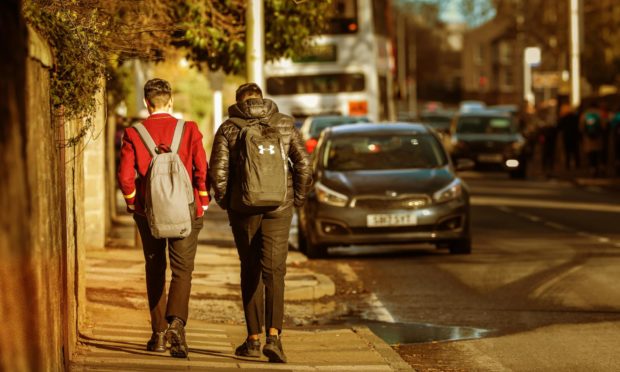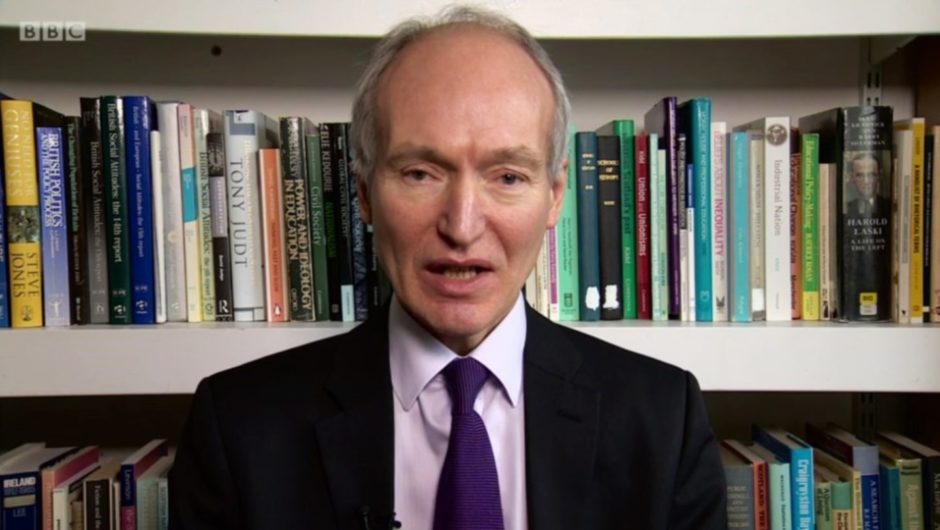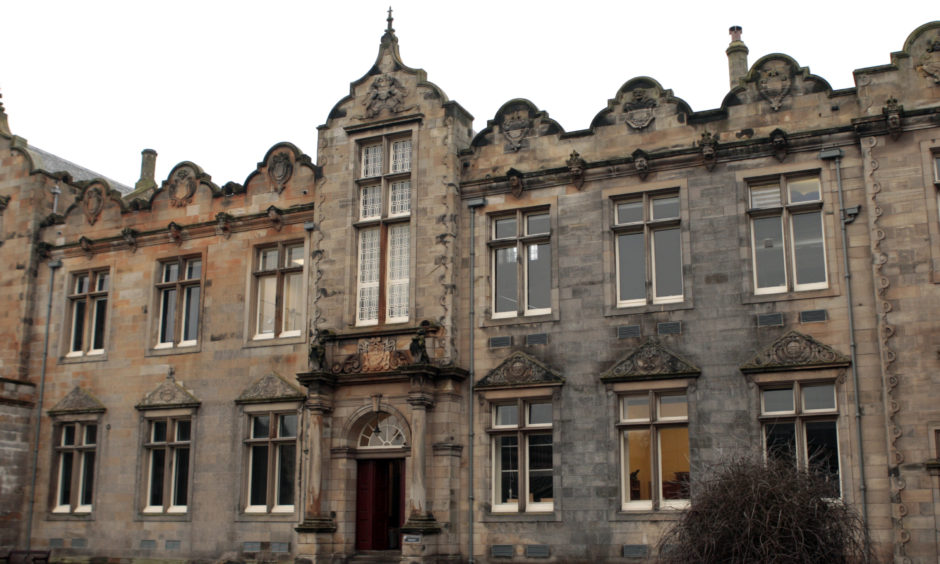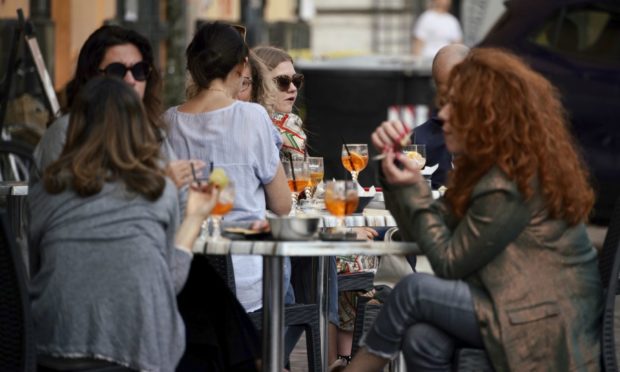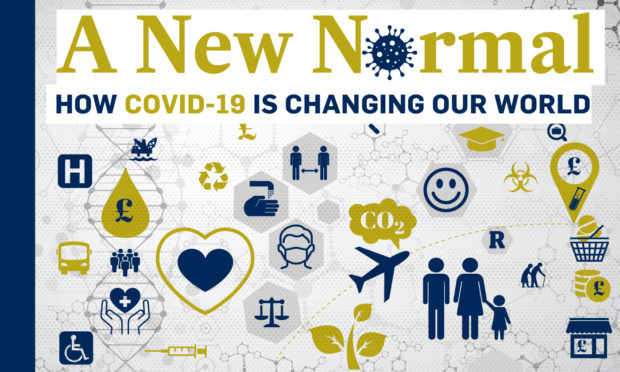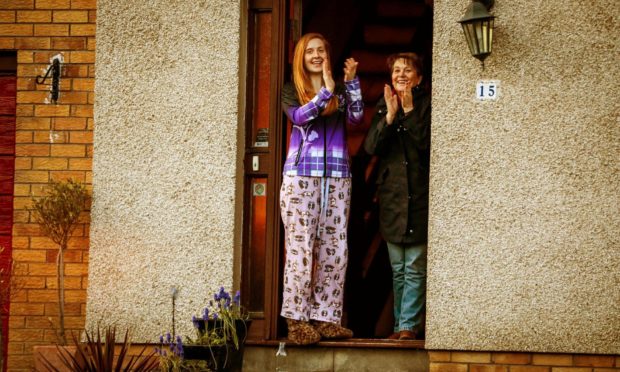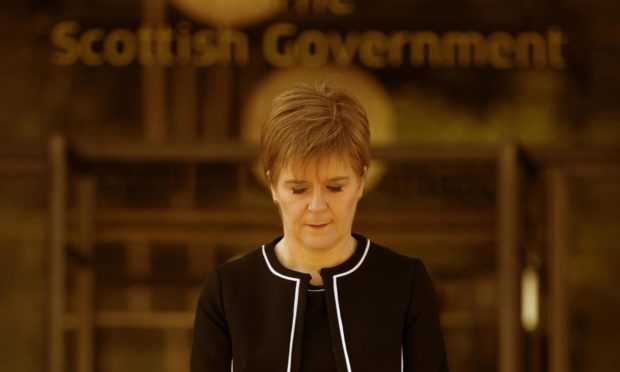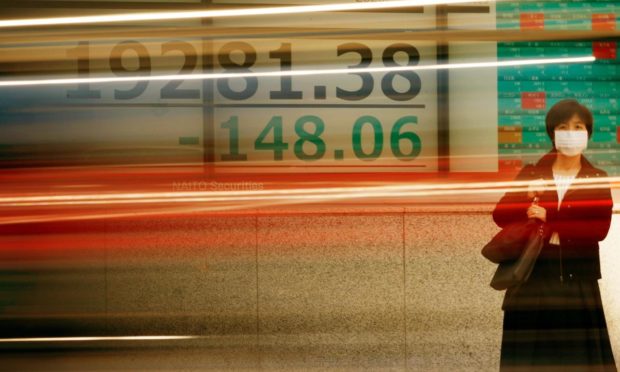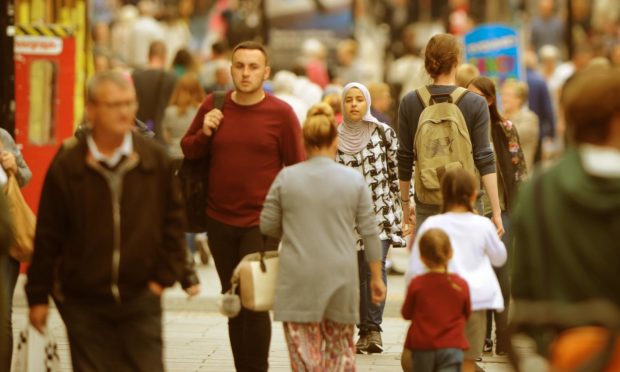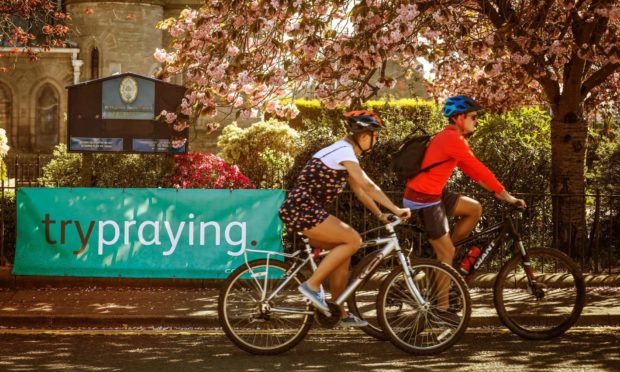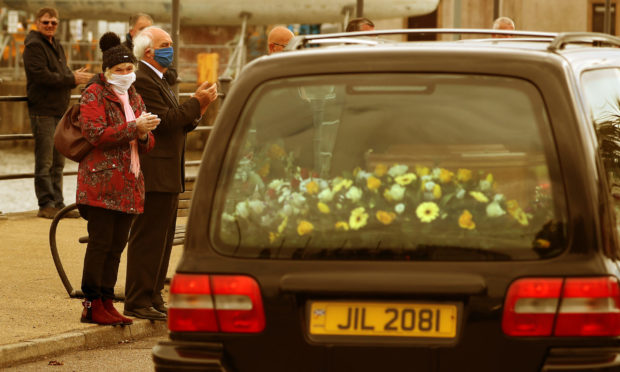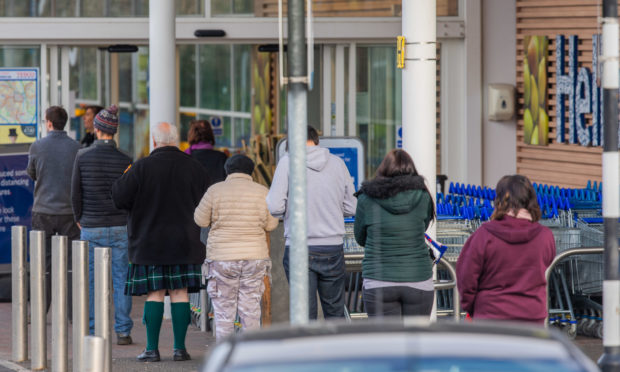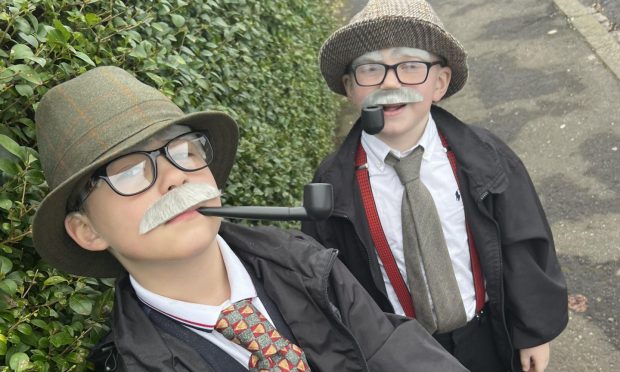Leading academics have called for a radical shake-up of Scotland’s education system to avoid a “catastrophic” legacy for young learners post-lockdown.
Some of the country’s top experts on schools and universities have set out how the coronavirus pandemic could permanently shift the way institutions operate, and why leaders must seize on emerging ideas to avoid long-lasting damage.

They say lessons learned during lockdown must be taken forward long after children finally return to classrooms and some foresee a root and branch review of university funding that could see research grants offered to just a select few institutions.
Experts believe the pandemic and subsequent closure of schools and universities has facilitated a “huge” unplanned experiment – and the results could have significant consequences for the future.
Among the radical proposals being put forward to transform Scotland’s education system are:
- A restructuring of human resource in schools using online tools to allow teachers to focus more time on one-to-one or small group learning.
- Having some children, particularly disadvantaged learners, resit an entire year or attend months of focused sessions to catch up with their peers.
- Viewing the current lockdown as a huge unplanned experiment and trialling new systems of education that would not normally fit within the accepted structure.
- Looking to the ‘direct instruction’ model practised in the US to produce standardised instruction videos or scripts and strengthen the roles of teachers.
- A complete restructure of university finance, including considering large fees for Scottish students or restricting research grants to just a few, select institutions.
Dr Keir Bloomer, architect of the Curriculum for Excellence and one of Scotland’s pre-eminent experts on education, believes the “most important” question facing leaders is what can be taken forward in terms of lessons learned from the current crisis.
Dr Bloomer predicted the effects of children being out of school until August will be “severe” and in some cases “quite catastrophic”, and said it is “perfectly possible” some children have to repeat entire years or carry out the same work again.
“There is a lot of quite good research in various countries which shows that most children lose learning across extended holiday periods,” he said.
“That effect is most marked in relation to disadvantaged learners.
“We know that across the normal Scottish summer holiday many children start school in August further back then when they left in June, and the disadvantaged experience that decline to a greater extent.
“The more extended the period, the greater loss of learning. I would assume that would be exponential, in other words not linear.”
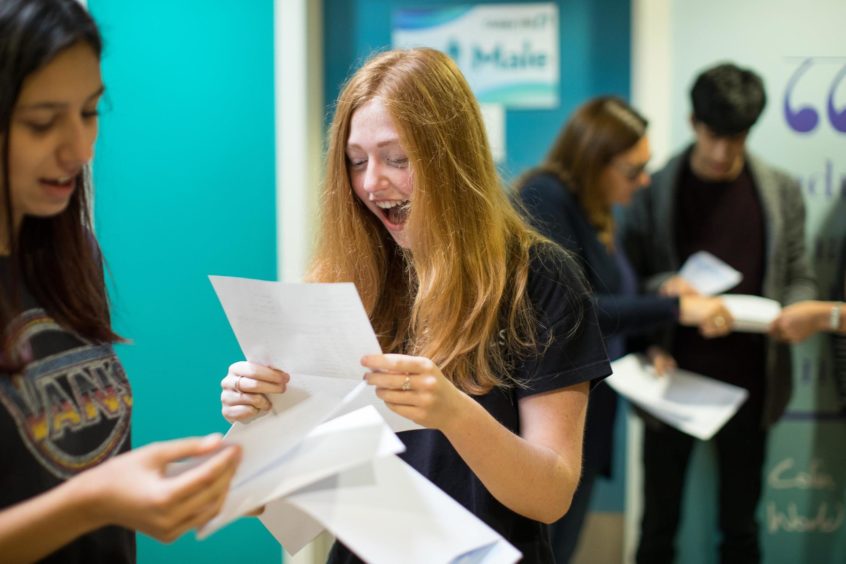
Policy makers should consider whole-year resits or focused sessions over several months for disadvantaged learners
Lindsay Paterson, professor of education policy at Edinburgh University, agrees the lockdown has been “hugely disruptive” and warned a widespread reduction in learning during the pandemic could have long-term consequences.
Prof Paterson believes the issue of some children needing to resit classes or access additional support sessions should be urgently considered by policy makers.
“Certainly at some levels of education it must be seriously thought about,” he said.
“If you have a child who started primary one last August, they would expect normally to do approximately nine months of schooling after you take out the holidays and things that occur at Christmas and Easter.
“Now, instead of nine months of schooling, they’ve had at best about four. They’ve had about two-thirds of the schooling you might normally expect.
“The significance of that in primary ones is that up to that stage that is the only schooling they’ve had.”
Dr Bloomer said much more could have been done at a government level to break down barriers for disadvantaged learners during lockdown.
AUDIO: listen to the ‘New Normal’ series writers discuss their findings in this special Stooshie podcast
There has been wide variation between local authority areas, and even from school to school, on what tools and resources have been made available. Dr Bloomer believes there is “no question” Scotland’s attainment gap has widened during the pandemic.
“There is a considerable amount of this which is geographical accident,” he said.
“What is available depends on the school or the area that you’re in but we do know that – as is usually the case – the disadvantaged will fare worst.
“If we are talking about online learning, although a huge majority of the population has access to electronic devices, most of the people who don’t are among the poorest groups in society.
“Often, they are further disadvantaged because the only device they have may be a cheap phone with a poor interface.
“I’m not saying that every disadvantaged learner in Scotland has fared particularly badly during this period but I think a very high proportion of them have.
“All of these factors tend to accentuate the difference between advantaged and disadvantaged learners.”
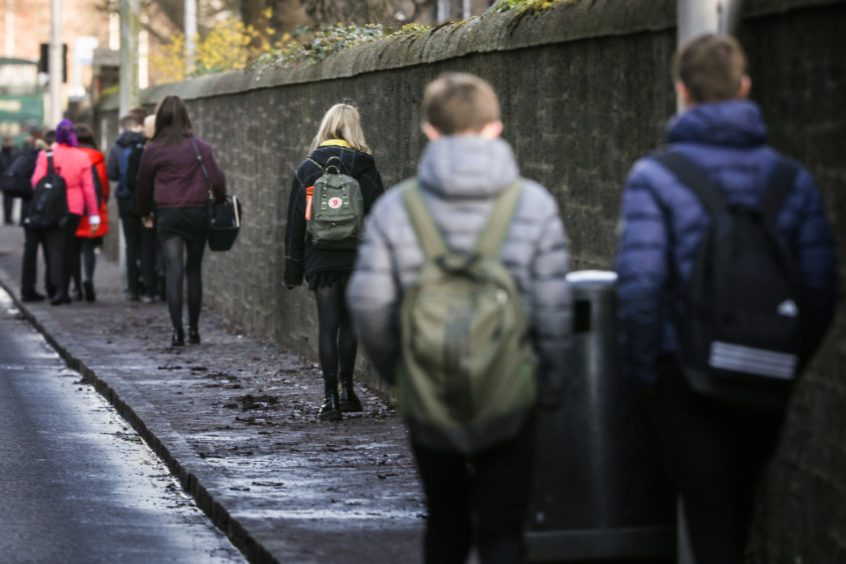
Children entering their second year of schooling could be equipped with just half the level of learning typically expected
Professor Paterson warned the pitfalls of the pandemic could be compounded by the same effect typically seen when disadvantaged children return from summer holidays further behind than their peers.
“What we’re saying here is that quite possibly children in disadvantaged social circumstances will, at the end of primary, have had the equivalent of just half the schooling experience they should have,” he said.
“So then theoretically they’re entering primary two this coming August but are they really at the level that would be expected at primary two?
“And is it going to be practically possible for teachers to teach a class with some children that have suffered this kind of thing at the same as some children who have had lots of support at home?
“That creates such a gulf that it makes me wonder if it would actually be a good idea to, at least temporarily, have children who have fallen behind taught for a while in special classes – possibly for around three months – to get back to the point they should be at.”
Dr Bloomer said the extent of long-term damage will depend on what kind of strategy leaders put in place coming out of lockdown.
He is confident the damage will not be beyond repair but hopes policy makers will look at what has happened as an opportunity to reform traditional education systems.
“I think we should be approaching this matter in a sense of wanting to learn from the experience that is taking place at the present moment and not simply wanting to rush back to the way we did things before the crisis broke,” Dr Bloomer said.
“After all, a huge, if unplanned, experiment has taken place.
“We are in the process of running an education system without schools. We’ve never tried to do anything like that.
“It’s had varying levels of success but to some extent it has been made to work, which is in many way astonishing and is something from which lessons should be drawn.”
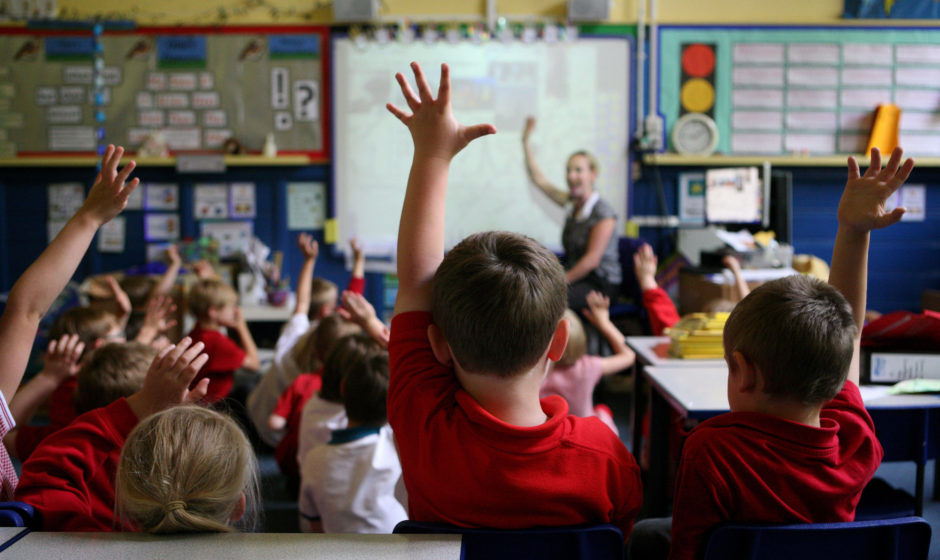
Restructure human resource in schools to allow teachers to work in small groups or one-to-one with slower learners
Dr Bloomer said there are no serious signs of radical change at a government level but there may be more of a transformational mood among educationalists.
He insisted much of the traditional set-up of schools is “organisationally convenient” but not necessary, “and we should we questioning all of them at the present moment”.
One proposal Dr Bloomer would like to see taken forward is a restructuring of resources to allow teachers to spend more time with smaller groups.
“If you think about the way schools traditionally use their human resource, it is to an overwhelming extent used to put a teacher in front of every group of 20 or 30 kids,” he said.
“Once you’ve done that, especially if it’s a primary school, there’s actually not a fantastic amount of resource left. Class contact has been the main use of teacher time.
“Over the last eight weeks, there has been very little class contact. Things like researching learning materials, setting assignments, giving feedback, trying to support individual pupils or small groups – these are things that have been taking up the slack.
“The question then should be: is the traditional pattern of use of human resources the best one? And the answer, I think, is obviously not.
“The system could do with a lot more in the way of support to individuals and small groups, even if that meant less class contact.
“We ought to be thinking about things like that.”
Online methods on their own are just too crude and insensitive.”
Professor Lindsay Paterson
Prof Paterson said he can also see a shift in human resource post-lockdown – and one of the long-term positives could be teachers being freed up to work in a different way.
He believes there will “almost certainly” be more use of technology and home learning but stressed many people will want to return to schools as a social space because it remains an effective way of learning.
“There is a lot of fashionable rhetoric about how this is kind of the end of school as we know it and bringing people together to study,” Prof Paterson said.
“All of the evidence shows that schools are not just some sort of arbitrary invention. Bringing people together face-to-face to study is a very effective way of getting people to learn things.
“That’s partly because you can have a discussion or dialogue and the teacher can respond to the characteristics of a child in a way you cannot do online.
“Online methods on their own are just too crude and insensitive.”
Scotland’s education bodies are ‘diametrically opposed’ to some emerging teaching styles
Prof Paterson pointed to the ‘direct instruction’ movement in the US as a method that could be suitable for Scotland, both in schools and universities.
The technique, which uses pre-arranged standardised scripts or video instruction to free up teachers to work one-to-one or with small groups, has become increasingly popular since the 1980s .
Research shows the method allows children to learn more while educational inequality is typically reduced because teachers have time to work with slower learners, Prof Paterson said.
The expert said Scotland’s education bodies are averse to such systems because the Curriculum for Excellence is “diametrically opposed” to standardisation.
Prof Paterson believes some areas of the curriculum, such as science and maths, could be completely standardised – even across several countries – to strengthen the role of the teacher and make their job more rewarding.
“What I think could be done is to use this unfortunate situation to try out different ways of doing school education,” he said.
“Why not experiment with these ideas, such as the example of direct instruction, and then evaluate the results?
“If they produce the same kind of positive results that has been seen in research from the US, then extend it and roll out it more widely across Scotland.”
Universities face a looming funding disaster and will need to find new ways to pay for research
The method could also be trialled in a university setting, where bold ideas may be needed to overcome an “enormous” loss of funding as international students are forced to stay away.
St Andrews University said last month it is facing its most serious crisis in modern times, after principal Sally Mapstone announced a £25 million financial black hole and warned further losses are likely.
Other institutions face similar struggles and Cambridge University has already confirmed students will not be attending any face-to-face lectures when they return this year, with learning instead being moved online.
Prof Paterson does not believe online learning will entirely replace the university model – which has been in place largely for the past 800 years in Europe – but he said education leaders will need to consider new ideas to tackle the funding crisis.
“Older universities with large proportions of students coming from outside the UK, that’s where the main funding loss is going to be faced,” he said.
“It will be less of a problem for UHI or Robert Gordon or Abertay, where most students tend to come from the UK.
“There is an immediate crisis facing universities. It will be an enormous problem, the loss of income from non-European students, because they get charged very high fees.”
The funding model in Scottish universities means fees paid by non-European students, often at around £30,000, are used to subsidise research and top up state financing of Scottish learners who do not pay directly.
“The Scottish Government doesn’t actually pay the full cost of the education of these people because the money that comes doesn’t come anywhere near to covering even just the cost of the teaching,” Prof Paterson said.
“Obviously that system can’t remain. The worst-case scenario is that nobody turns up from China next year. That in itself would be a colossal crisis for university funding.
“Charging fees to Scottish students may well have to come but even if they were charged in the same way as they are in England, it would still not cover the cost – and it certainly wouldn’t cover the subsidy of research that is done through student fees.
“Something is going to have to change and I think there is a lack of honesty about that at the moment.
“I do not see how it is going to be possible to retain the sort of research quality of older universities in Scotland at the level of fees that are currently charged to Scottish or European students.”
Extra funding is unlikely to be available for universities even after lockdown is lifted because governments across the world are likely to face crises in a range of sectors, such as health and social security.
“There really doesn’t seem any other option, to me, than a contraction in research,” Prof Paterson said.
“Unless you’re going to say that we distribute tiny amounts of money everywhere in the hopes that something crops up, which seems to me to be a recipe for disaster, what has to happen is the concentration of all research funding to a smaller number of institutions to sustain the quality of research.
“So places like Aberdeen, Dundee and St Andrews get more money and other universities get less money. That will be highly controversial politically but I don’t see any other way by which the international quality of research can possibly be sustained.”
Adopt bold new ideas from education’s grassroots to solve crisis in universities and schools
One way to redress the balance could be to place a condition on funding that would see top researchers made available to other institutions through standardised online materials and video tutorials.
Prof Paterson said it is not necessarily the case that those doing the most advanced research make the best instructors and most teaching at universities does not use materials from the frontiers of academic research.
“If we are going to concentrate research funding into fewer universities, one of the conditions of that funding could be that these universities create teaching materials for other universities to use with their students,” he said.
“That means students of all universities are benefiting from research being done at some of the universities – even if is not being done locally.”
Using this model, academics doing research in Dundee or Aberdeen could provide online tutorials and video lecturers for students in Inverness.
Prof Paterson said this could allow more students to access international-quality research as universities recover financially from the pandemic.
While he believes no serious talks are currently taking place in Scotland about these issues, Prof Paterson called on policy makers to embrace a “complete shift in mindset” by listening to the grassroots across education.
“A lot of these ideas have been bubbling away for a while and this crisis is an opportunity to bring some of them into policy making,” he said.
“Of course for that to happen, the various bodies have to listen and they have to go out and find these ideas.”
